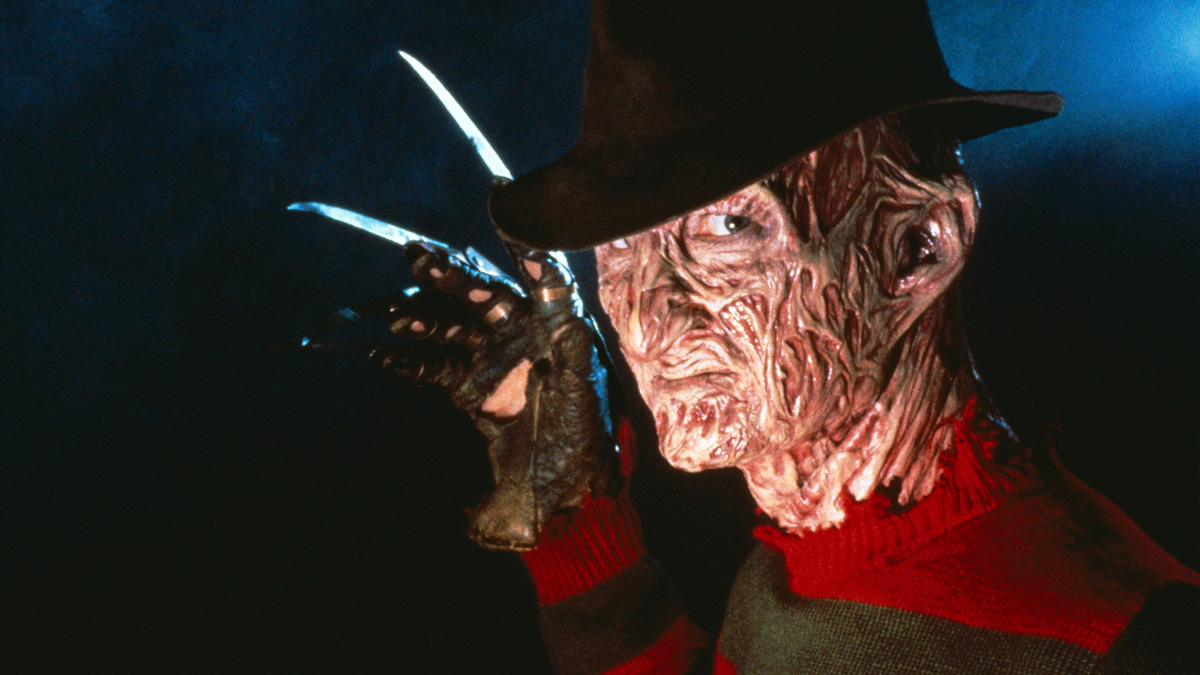
(c) Photofest / Getty Images
What was the huge success of Freddy Krueger in ``A Nightmare A Nightmare on Elm Street''?
2021.01.04
"A Nightmare on Elm Street" synopsis
He wears a glove with a knife claw on his right hand, a fedora hat and a burnt face, and a red and green striped sweater. That man is Freddy Krueger, the murderer who appears in his dreams. Freddy appears in the dreams of Elm Street high school students and terrifies them. What's more, even though it was supposed to have happened in a dream, the scars remain even when she wakes up... Freddy's fear escalates into a murder, and eventually a high school girl ends up fighting Freddy...
Wes Craven's debut film `` Aesthetics of Fresh Blood '' (1972). Early in the film, a handwritten Signs nailed to a tree beside the road is shown.
"Lake Ends in Road"
If you want to mean ``the road ends at the lake,'' the correct grammar is ``Road ends in lake,'' so this would mean ``the road ends at the lake.'' Because of this one Signs of incorrect grammar, the brutality of not being able to understand the language looms over the world on screen. This is a well-calculated result that was intended by Coach Craven.
“Aesthetics of Fresh Blood” preview
Index
- Birth of “A Nightmare on Elm Street”
- Freddy Krueger, born of fear theory
- The charm of Freddy, the talkative murderer
- the house that freddy built
Birth of “A Nightmare on Elm Street”
In the late 1970s and 1980s, healthy young Hmong people who immigrated to California from Southeast Asia became obsessed with the idea that if they slept, they would die. One parent thought about their son who hadn't slept for five days, so they mixed sleeping pills into his food and put him to sleep, but the next morning, he actually died. This phenomenon ultimately killed more than 100 healthy Hmong young men and gave rise to the term "Sudden Hmong Death Syndrome."
Many of them were soldiers trained to fight against the North Vietnamese Army during the Vietnam War, so they may have been affected by the trauma they suffered during the war: PTSD, or the dry climate of California, which is different from the swamps of Southeast Asia. It was rumored that anxiety about living in a strange country was the cause. However, the exact reason remained unclear. This phenomenon died down because it did not appear among the new generation of Hmong born in America.
When Wes Craven learned about this strange phenomenon, he thought of the man in the fedora hat he saw from the window of his second-floor apartment when he was a child.
Craven, a boy who was not yet 10 years old, suddenly woke up in the middle of the night, and when he casually looked out the window, he saw a man wearing a fedora standing across the street. It seems like it fits. Terrified, I crawled into bed, but there was no way I could fall asleep.When enough time had passed, I snuck away and looked out the window to see that the man was still standing there, still staring at the window. .
Perhaps knowing he was being watched, the man started walking slowly, turned a corner, and disappeared. However, around the corner was the entrance to the apartment building where young Craven lived.
She panicked and woke up her family, creating a huge commotion, but the man didn't break in and the incident ended peacefully. However, young Craven said he couldn't sleep that night. The man in the fedora was probably drunk or something, and had just developed a sadistic sense of mischief in order to frighten the boy he happened to see.
Wes Craven adapted these ideas and wrote a screenplay of ``A murderer in a fedora who attacks you when you sleep.''

